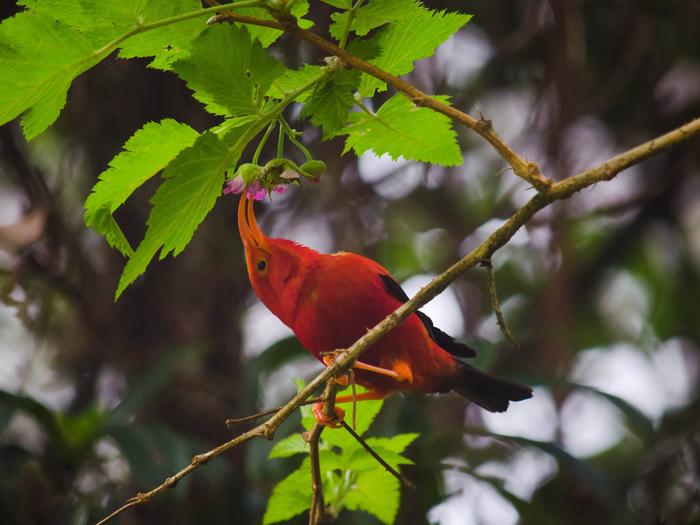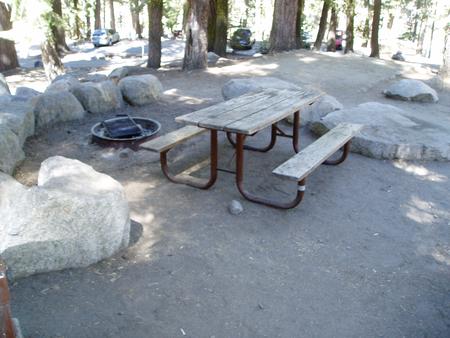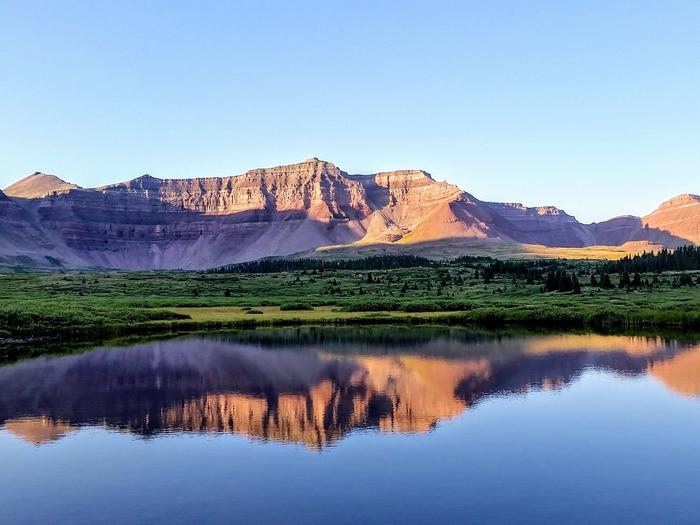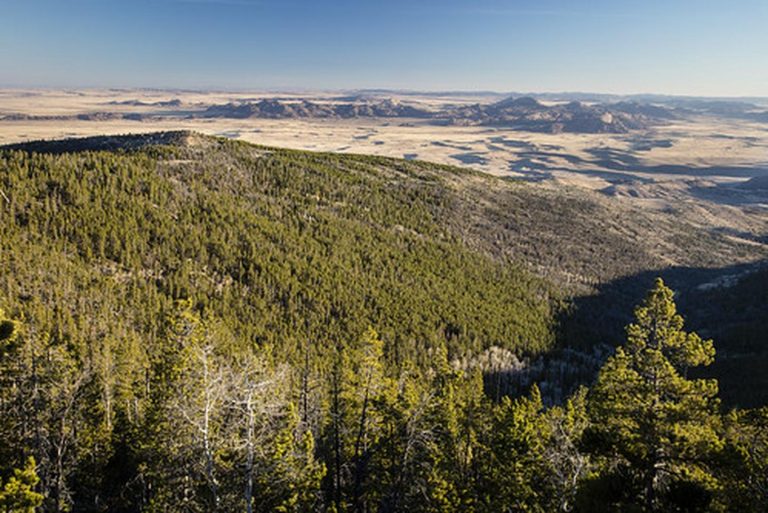Directions
The refuge office is located at 60 Nowela Street, Suite 100. Only the Upper Maulua Unit of Hakalau Forest Refuge is open to the public, and only on weekends and holidays for hiking and photography. There are no interpretive signs, bathrooms, trails, or parking lots. Visitors must call the refuge office (808-443-2300) a week before their intended visit to get the combination to a locked gate through which they let themselves in and out. A brochure will be mailed which describes the Maulua Unit, and our public access program plus a general brochure which describes the entire refuge and our management programs. The Upper Maulua Unit can be reached from Hilo or Kona via the Saddle Road (Highway 200): Near the 28-mile marker on the Saddle Road, turn north on the paved Mauna Kea Summit Road and proceed two miles. Turn right (east) across a cattle guard and onto Keanakolu Road (also known as Mana Road). Drive approximately 16.5 miles on this gravel road to the Maulua Gate. A four-wheel-drive vehicle is required for the long and bumpy drive which takes about two hours each way from Hilo or Kona. Contact the refuge office for reservations and current road conditions. Due to its remote location and poor roads, the Upper Maulua Unit gets only a handful of visitors each month.
Phone
808-443-2300
Activities
HIKING, WILDLIFE VIEWING, ENVIRONMENTAL EDUCATION, PHOTOGRAPHY
Camping Reservations
Reserve your campsite at these camping areas:
Hiking Trails
Looking for nice hiking areas to take a hike? Choose from these scenic hiking trails:
Related Link(s)
Hakalau Forest National Wildlife Refuge
Hakalau Forest National Wildlife Refuge consists of the 33,000-acre Hakalau Forest Unit and the 5,300 acre Kona Forest Unit, located at elevations between 2,000 and 6,600 feet on the east and west sides of the island of Hawaii. The sloping terrain is forested with some of the finest remaining stands of native montane rainforest in Hawaii. The refuge was established to conserve endangered forest birds and their habitat. Together, the two units support 9 endangered bird species, 1 species of endangered bat, and more than 20 rare and endangered plant species. Major habitat management programs include the control and removal of feral pigs and cattle, control of invasive weeds, restoration of native forests, and wildfire suppression. Major wildlife management programs include population monitoring, predator control, and biological research support.








